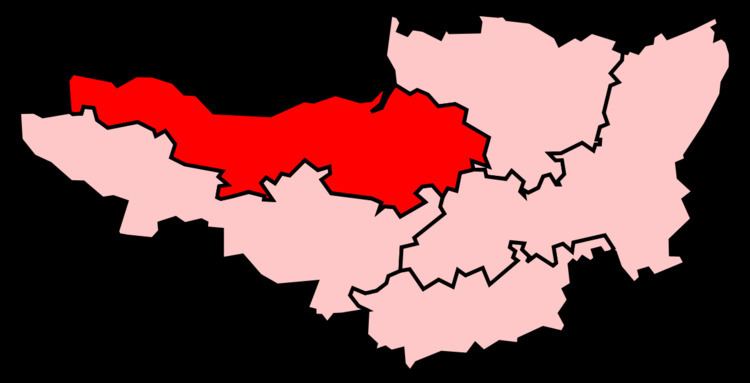County Somerset Created from West Somerset Type of constituency Borough constituency | Number of members One Number of members Two | |
 | ||
Replaced by West Somerset, Bridgwater and West Somerset | ||
Bridgwater was a parliamentary constituency represented in the House of Commons of the Parliament of the United Kingdom, until 2010 when it was replaced by the Bridgwater and West Somerset constituency. It elected one Member of Parliament (MP) by the first past the post system of election.
Contents
History
Bridgwater was one of the original Parliamentary Constituencies in the House of Commons, having elected Members of Parliament since 1295, the Model Parliament.
The original borough constituency was disenfranchised for corruption in 1870. From 4 July 1870 the town was incorporated within the county constituency of West Somerset.
From Parliament's enactment of the major Redistribution of Seats Act 1885 which took effect at the 1885 general election, a new county division of Bridgwater was created, which lasted with modifications until 2010. The constituency expanded considerably beyond Bridgwater town itself from 1885.
Bridgwater frequently compared to other seats had a radical or game-changing representative, though since 1950 this became less noticeable in its candidates elected.
The seat received particular fame in late 1938 when a by-election took place in the aftermath of the signing of the Munich Agreement. Opponents of the agreement persuaded the local Labour and Liberal parties to not field candidates of their own against the Conservative candidate, but to instead jointly back an independent standing on a platform of opposition to the Government's foreign policy, in the hope that this would be the precursor to the formation of a more general Popular Front of opposition to the government of Neville Chamberlain in anticipation of the General Election due in either 1939 or 1940. The noted journalist Vernon Bartlett stood as the independent Popular Front candidate and achieved a sensational victory in what was hitherto a Conservative seat. He represented the constituency for the next twelve years.
In 1970 another by-election in the constituency achieved fame as it was the first occasion when 18-, 19- and 20-year-olds were able to vote in the UK Parliamentary election. The first under-21 year old to cast a vote was Susan Wallace. The by-election was won by the future Conservative Cabinet Minister Tom King who held the seat for the next thirty-one years, followed by another Conservative until its abolition in 2010.
Boundaries
1885-1918: The Municipal Borough of Bridgwater, the Sessional Division of Bridgwater, and parts of the Sessional Divisions of Taunton and Ilminster.
1918-1950: The Municipal Borough of Bridgwater, the Urban Districts of Burnham-on-Sea, Highbridge, Minehead, and Watchet, and the Rural Districts of Bridgwater and Williton.
1950-1983: The Municipal Borough of Bridgwater, the Urban Districts of Burnham-on-Sea, Minehead, and Watchet, and the Rural Districts of Bridgwater and Williton.
1983-2010: The District of Sedgemoor wards of Cannington and Combwich, Central, Dowsborough, Eastern Quantocks, Eastover, East Poldens, Hamp, Huntspill, Newton Green, North Petherton, Parchey, Pawlett and Puriton, Quantock, Sandford, Sowey, Sydenham, Victoria, Westonzoyland, West Poldens, and Woolavington, and the District of West Somerset wards of Alcombe, Aville Vale, Carhampton and Withycombe, Crowcombe and Stogumber, Dunster, East Brendon, Holnicote, Minehead North, Minehead South, Old Cleeve, Porlock and Oare, Quantock Vale, Watchet, West Quantock, and Williton.
Members of Parliament
Bridgwater county constituency, 1885–2010
Elections in the 1910s
General Election 1914/15:
Another General Election was required to take place before the end of 1915. The political parties had been making preparations for an election to take place from 1914 and by the end of this year, the following candidates had been selected;
Elections in the 1940s
General Election 1939/40:
Another General Election was required to take place before the end of 1940. The political parties had been making preparations for an election to take place and by the Autumn of 1939, the following candidates had been selected;
